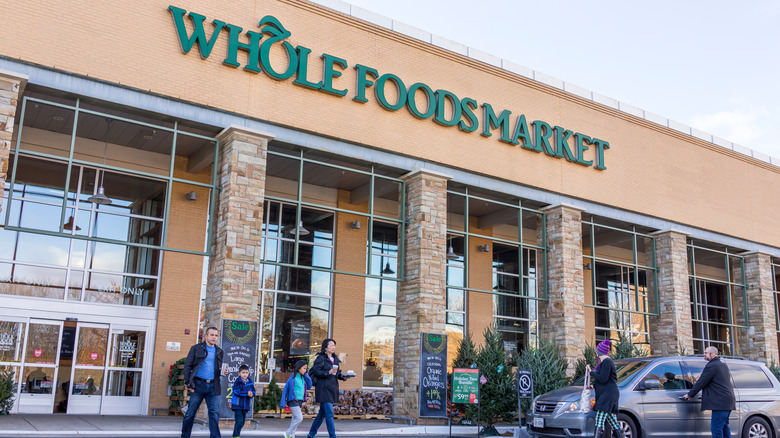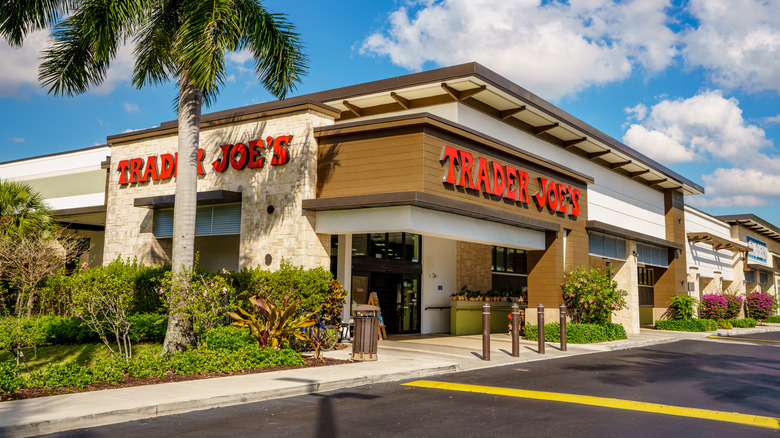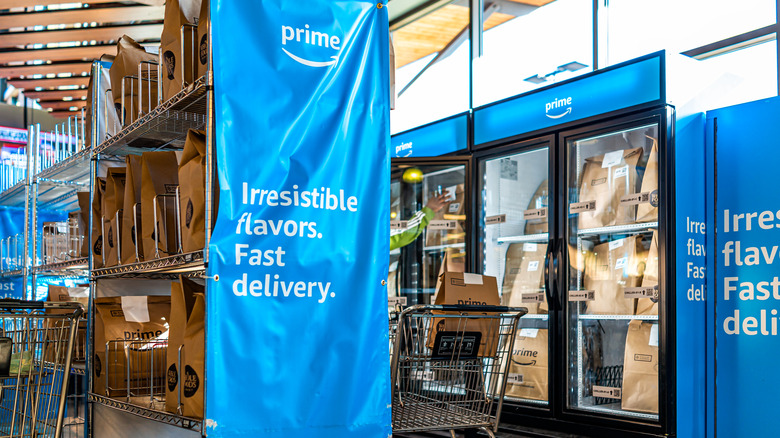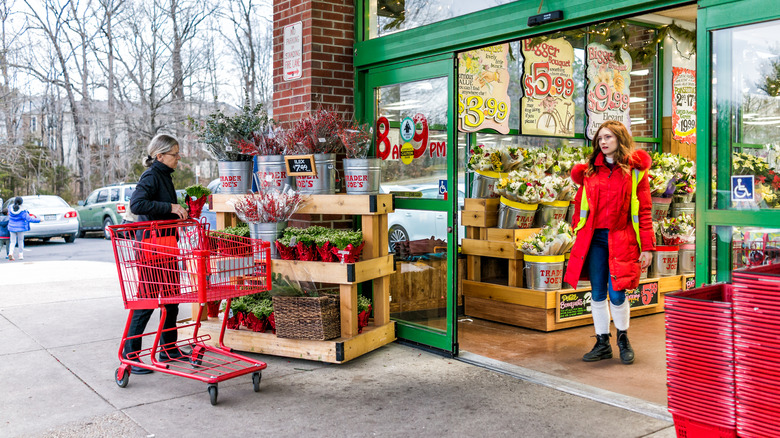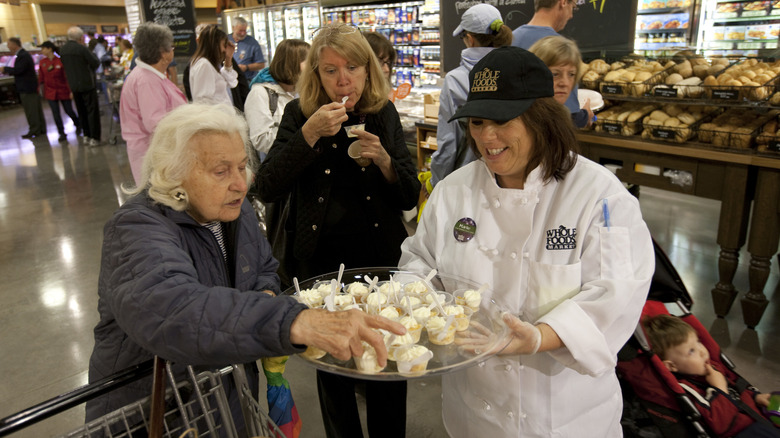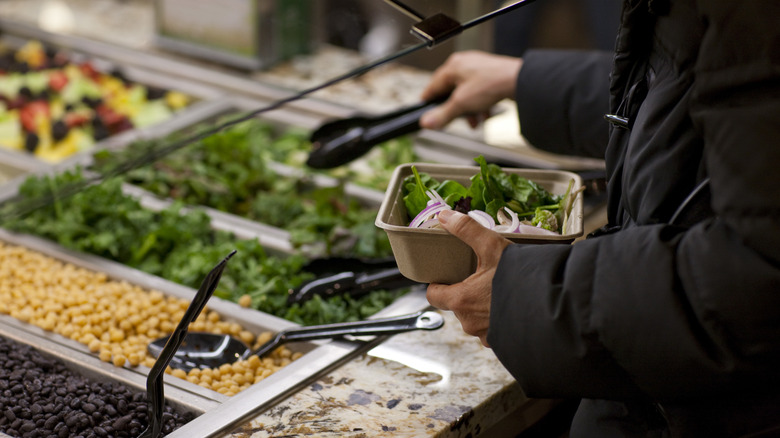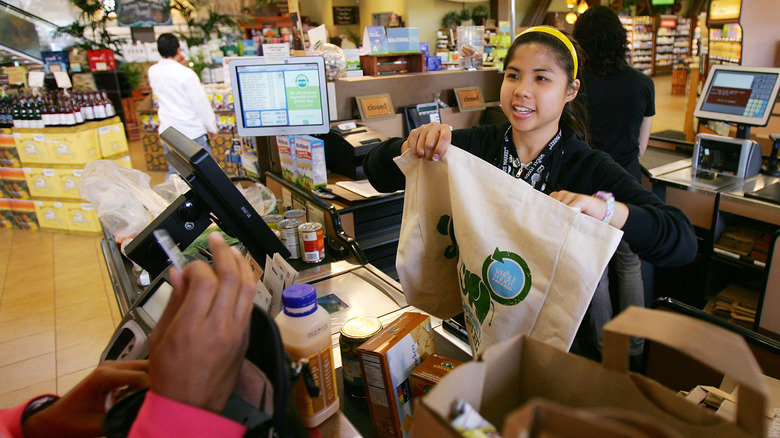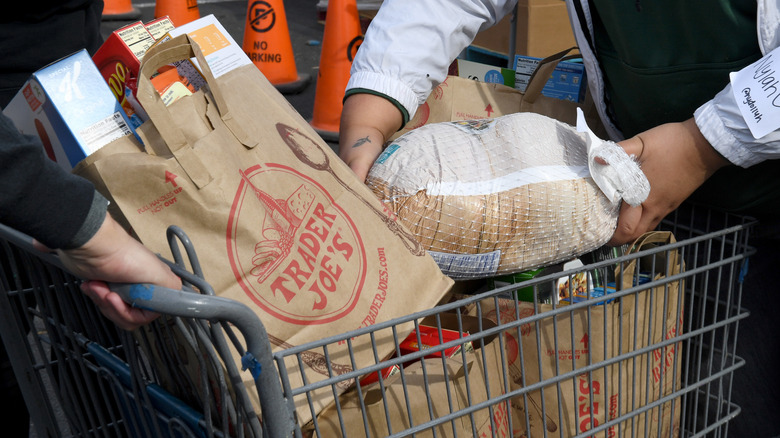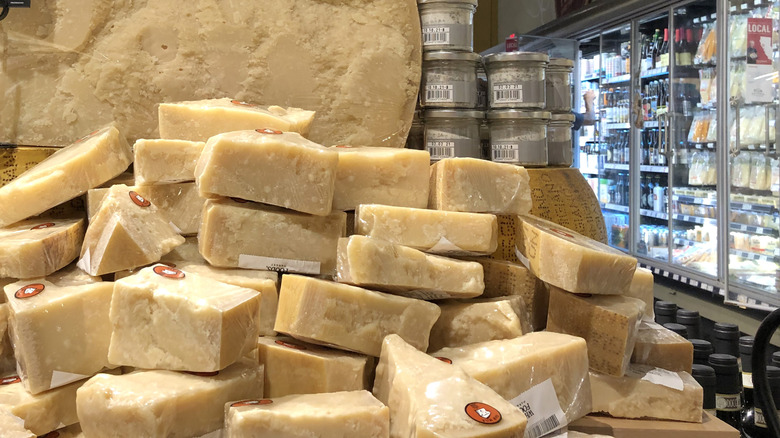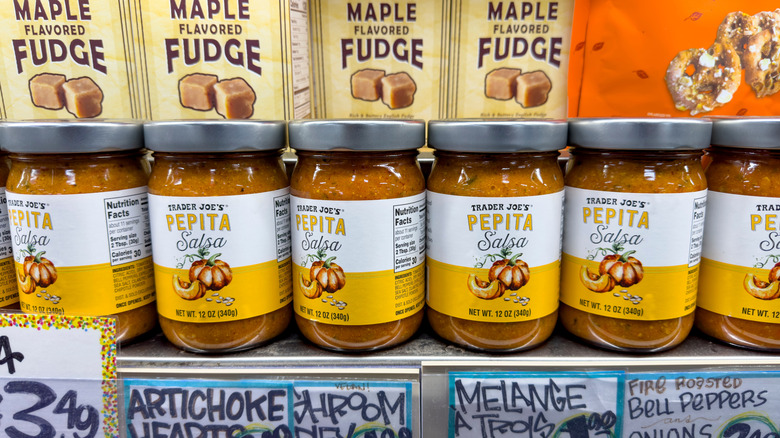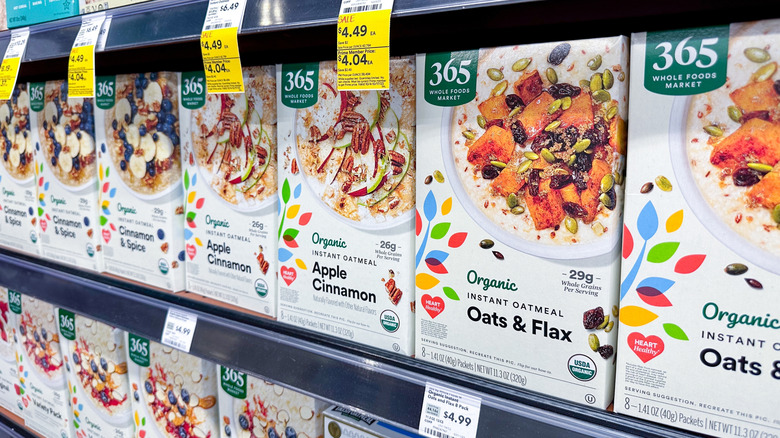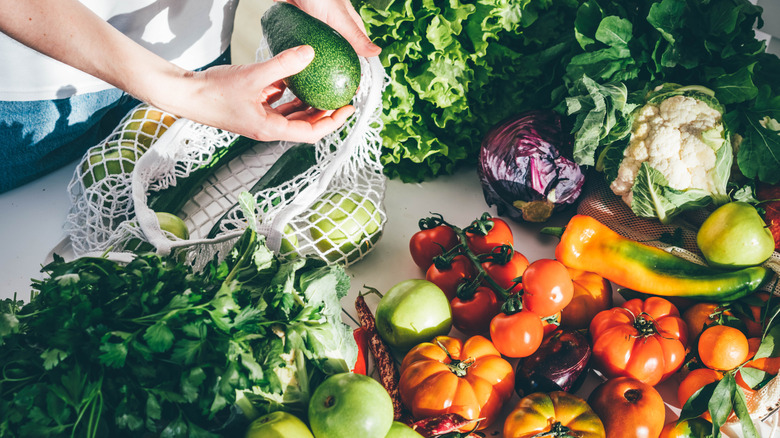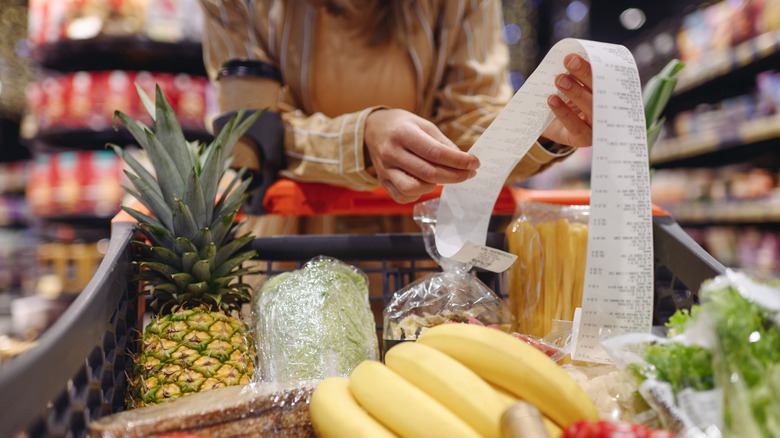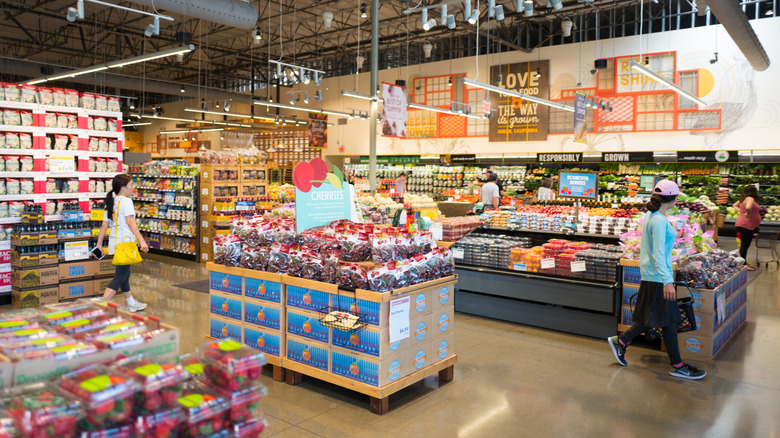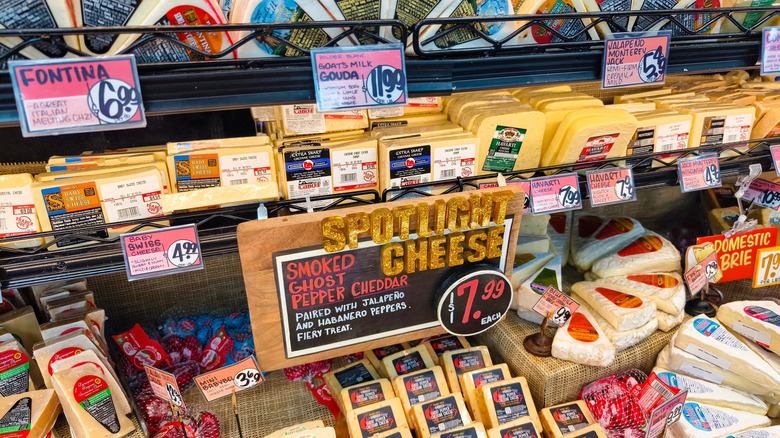Trader Joe's Vs Whole Foods: Everything You Need To Know
We may receive a commission on purchases made from links.
When it comes to grocery shopping, Whole Foods and Trader Joe's are customer favorites, each offering a unique blend of products and experiences that keep customers coming back for more. Whether you're a fan of wandering the aisles to discover new treats or you're keen on sustainable shopping practices, these two retailers have unique offerings and passionate fan bases.
Trader Joe's is renowned for its charm, affordable prices, and exclusive private-label products. Stepping into a Trader Joe's feels more like visiting a local neighborhood market than a big-name chain, with its whimsical décor, friendly staff, and constantly rotating seasonal items.
Whole Foods, on the other hand, prides itself on being a haven for organic and health-conscious shoppers. Known for its vast selection of high-quality, sustainably sourced foods and commitment to wellness, Whole Foods delivers a more upscale shopping experience, sometimes with a higher price tag to match.
Whole Foods got its start in Texas
You may not think of Texas as an epicenter of healthy eating and organic food, but the Lone Star State is the birthplace of a whole foods revolution. Whole Foods opened its doors in Austin, Texas, in 1980, when four owners of natural food grocery stores joined forces. When John Mackey, Renee Lawson Hardy, Craig Weller, and Mark Skiles came together to form Whole Foods, there were only a handful of supermarkets in the country that specialized in natural foods. Mackey and Hardy owned Safer Way Natural Foods, and Weller and Skiles owned Clarksville Natural Grocery. Both stores were in Austin.
The foursome opened the doors to the first Whole Foods in 1980. The first year was rough, and a catastrophic flood overtook the store and caused $400,000 in damages. People believed in the vision, though, and with the support of the local community and investors, the store reopened in less than a month. It hasn't looked back since. Today there are more than 520 Whole Foods stores in the United States.
Trader Joe's first opened in California
Trader Joe's was born when California resident Joe Coulombe decided to leave his struggling convenience store behind in favor of opening a grocery store that appealed to a very particular demographic: educated, well-traveled shoppers who were looking for something a little out of the ordinary (in Coulombe's words, his ideal customer had "a taste for something other than Velveeta"). In 1967, Coulombe opened the first Trader Joe's in Pasadena, California. Today there are almost 600 Trader Joe's in the United States.
Coulombe was a savvy entrepreneur who seized on unique opportunities to grow his business. First, his store opening was followed by the release of the Boeing 747, which spurred an international travel boom — Coulombe knew his customers would be looking for exciting products after traveling the world, and he stocked his shelves with items that did not disappoint. Trader Joe's also carried wine at a deeply discounted price when compared to other stores, thanks to a loophole in trade laws. And as the store's popularity grew into the 1970s, Coulombe was quick to jump on the health food trend.
Whole Foods offers grocery delivery and pickup
Most Whole Foods patrons enjoy the experience of shopping at Whole Foods, but in this busy day and age, many of us have come to rely on grocery delivery services. Whole Foods shoppers need not worry if they don't have time to peruse the aisles for the perfect cut of meat or the juiciest-looking apple – the brand has a robust and customer-friendly partnership with Amazon Prime for grocery delivery and pick-up.
While you can't find Whole Foods on grocery delivery apps like Instacart, Amazon Prime members can pay an additional fee of $9.99 per month for unlimited Whole Foods deliveries. If you don't need home delivery, you can order groceries online and schedule pick-up during 1-hour windows at your convenience. The benefits extend beyond delivery. Members receive a discount every time they shop at Whole Foods and get access to weekly members-only specials.
Trader Joe's doesn't offer delivery, but you have options
With friendly employees, fresh flowers, and quirky seasonal products, shopping at Trader Joe's is an experience. But not everyone enjoys the crowded aisles of this little grocery store, and many long for a way to have the groceries delivered. Trader Joe's does not currently offer a sanctioned pick-up or delivery service, but there are ways to work around that and still get your beloved Trader Joe's delivered to your front door.
Trader Joe's is intentional about its decision to keep its products in stores for in-person shoppers. The brand claims it doesn't work with delivery apps because the apps can't match the store's pricing and shopping experience. It also says that the infrastructure to support delivery and pick-up would be too taxing on existing resources (instead, it is focusing on keeping prices low). If you don't have time for a trip to Trader Joe's but you really need those truffle marcona almonds, you can look to task-managing apps to find someone to do your shopping for you. Try an app like TaskRabbit, which allows you to hire someone to run errands and complete tasks for you.
While you can sometimes find Trader Joe's items online, it's not wise to buy them. Trader Joe's doesn't sell any of its items online, so anything you purchase from the internet is being resold and doesn't come with any guarantees.
You can sample almost any item at both stores
That papaya mango iced tea looks delicious, but will you like it when you get home? Both Whole Foods and Trader Joe's let customers sample almost any item in the stores before purchasing, so you can try before you buy and feel confident in your purchase.
Whole Foods says they will open almost any item in the store for you to try, be it a bag of chips or piece of fruit. If you're uncertain about the juice, dragonfruit, or yogurt you want to buy, just ask an employee to get you a sample.
You don't have to buy it to try it at Trader Joe's, either. The store offers a similar try-before-you-buy policy, and you can ask an employee to get you a sample of any ready-to-eat food you find in the store. Worried about wasting? Don't be — the unfinished portion will go to employees to snack on, or be passed around to other customers to try.
You can sit and eat a meal at Whole Foods
While Trader Joe's has a lot to offer, one thing you can't get there is a hot, fresh meal. Whole Foods has a prepared food section where you can order a sandwich, pizza, or even a full meal to take home that was prepared by a chef. Some stores even offer an on-site coffee bar and a taproom that serves beer and wine, while others have juice bars and smoothies.
In addition, many Whole Foods locations have salad bars where you can make a single-serve salad or put together a salad to feed a large group. Don't have time for the salad bar? Grab a pre-made salad and carry on with your day (to be fair, Trader Joe's has pre-made grab-and-go salads as well).
The fun doesn't stop there, though. Grab some freshly-rolled sushi made with sustainably sourced seafood for a decadent (and easy) dinner.
Whole Foods is the more sustainable choice
It can be hard to say one particular store is more sustainable than another because there are so many categories that encompass sustainability (one store may be working hard to recycle packaging, for instance, while another focuses its efforts on sustainable seafood sourcing). But Whole Foods is committed to creating a better environment for its employees, customers, and vendors and scores higher than Trader Joe's when measured by third-party entities for its sustainability practices. The brand is also very transparent with its customers, sharing its sustainability practices online.
In 2022 Whole Foods received awards for energy efficiency, responsible sourcing, and animal welfare (the company received several awards for being a top-performing grocery store when it comes to chicken welfare). The brand is also dedicated to reducing its use of single-use plastics and is the first major grocery store to ban plastic bags and drinking straws.
Trader Joe's is committed to sustainability but has work to do
While Trader Joe's doesn't score as well as Whole Foods in sustainability comparisons, that doesn't mean the brand isn't trying. Trader Joe's has been cleaning up its act and putting new policies in place with recent sustainability efforts and policies. In 1977, Trader Joe's was the first grocery store to offer its customers reusable bags. A common criticism of the modern Trader Joe's, though, is that it relies heavily on plastics for packaging. The brand has been listening, and claims to have removed more than 12 million pounds of single-use plastic through changes like removing the plastic rings from a 6-pack of canned drinks and using more recycled plastic when possible.
And while TJ's might not score well in certain categories, like climate-friendly grocery stores, it shines in others – the brand donates almost 100% of unsold food to local charities (Whole Foods, on the other hand, has been under fire for dumping mass amounts of edible food into the trash — though it did begin a new food waste initiative in 2024.). TJ's also offers sustainable seafood options and has made changes to its refrigerants, which will positively impact its emissions.
Both brands are headquartered in the United States
Whole Foods and Trader Joe's both have headquarters in the United States, but only one brand is owned by an American corporation. The headquarters for Trader Joe's is located in Monrovia, California, which is just a 30-minute drive from the first Trader Joe's store in Pasadena (and yes, it's still there). Trader Joe's is owned by a German company called Aldi Nord, which is part of the Aldi Group (which owns, you guessed it, Aldi). Aldi and Trader Joe's have a lot in common, from streamlined shopping experiences to cult followings.
Whole Foods is headquartered in Austin, Texas, the city it grew up in. Whole Foods is owned by Amazon, which acquired the grocery store chain in 2017. While some people may have been concerned about the natural grocer merging with one of America's biggest tech companies, Amazon has brought some positive changes to the table, like lowering prices on many products and banning plastic straws.
Whole Foods has strict ingredient regulations
We live in a time when information is readily available, making us educated and informed consumers who are looking at nutrition labels more critically than ever. Whole Foods has responded to this by putting stringent ingredient policies in place. The store has a "no list" in effect that encompasses more than 300 ingredients it will not allow in its products.
Some of the ingredients Whole Foods won't carry are hydrogenated oils, olestra, and aspartame. The brand says they receive requests daily for new ingredients to be added to the "no list," but before they can be added, they need to be vetted. When determining what ingredients belong on the "no list," Whole Foods asks four questions: What is it? Is it necessary? Are there better alternatives? And, does it align with the brand's core values? So if you want that famous Whole Foods Berry Chantilly Cake, you can be assured that cake won't include any ingredients it doesn't need.
Trader Joe's takes care with ingredients
Trader Joe's has a positive and friendly relationship with its customers, and the brand practices transparency with its ingredients policy for all of the private label products in the store. While the list of banned Trader Joe's ingredients isn't as comprehensive as the one at Whole Foods, it is doing its best to meet customer requests and the demand for cleaner food.
Trader Joe's won't include any artificial flavors or preservatives, instead opting for natural options that are often sourced from things like spices, fruits and vegetables, and roots. It won't include any genetically modified ingredients, MSG, or partially hydrogenated oils. The brand lists all of the things it doesn't include in its food on its website. Trader Joe's also shares some of the ingredients it does use. For example, the brand doesn't use any artificial food coloring, but it does use natural dyes, which must be sourced from products like plants and minerals.
Both stores offer excellent private label brands
Both Whole Foods and Trader Joe's are able to offer more affordable options to consumers by relying on private-label brands. For Trader Joe's, it's the Trader Joe's label (yep, in this case, the brand it sells is ... the brand that is selling it). Whole Foods has a private-label brand called 365 Whole Foods Market.
Trader Joe's shoppers will see the Trader Joe's label splashed liberally across everything from salads to yogurt to meat. By using a private label and not relying on name-brand products, Trader Joe's keeps its prices down. The store argues, though, that Trader Joe's is, indeed, a name-brand product.
The Whole Foods 365 brand launched in 1997, and the store brand has been giving consumers a more affordable way to shop at Whole Foods for decades. Today the brand is committed to selling items like cage-free eggs, fair trade chocolate, and sustainable palm oils. There are more than 2,500 365 Whole Foods Market products available.
Both brands offer organic products, but Whole Foods has more
While both stores carry organic and non-organic food, Whole Foods has a more robust selection (and strict organic policies in place). If it's organic you're after, you're probably going to be better-served at Whole Foods.
Whole Foods is the first (and only) Certified Organic National Grocer. This certification means the store is held to high standards for handling its organic products from the time they leave the farm to when the customer purchases them. One thing Whole Foods does to maintain this certification is to ensure that organic and non-organic products never touch. That's right, if you buy an organic carrot it won't have so much as bumped against a non-organic carrot. Team members are trained on how to handle organic products and there are even dedicated spaces in the stores' kitchens so organic food is never prepped with non-organic food.
That doesn't mean Trader Joe's doesn't have great organic products, too. From its popular canned items to its famously cheap organic bananas, you'll have plenty of organic products to pick from.
Trader Joe's is cheaper than Whole Foods
While you can certainly find deals at either store, shoppers wanting more bang for their buck will save more at Trader Joe's. Trader Joe's keeps costs down by selling mostly private label products (versus Whole Foods, which sells popular name-brand items as well as its own brands). Trader Joe's also doesn't pay for advertising and keeps costs down by having small stores with lower operational costs, which all correlate to lower product prices.
In 2024, a bag of six organic avocados at Trader Joe's cost $4.49. A bag of organic avocados at Whole Foods, which contained two less avocados, was $4.99. A can of organic chickpeas at Trader Joe's was $.99, while the same product was $1.39 at Whole Foods. Prices will always vary between stores and locations, but these generalities apply across the entire product lines of both stores. One Reddit user said, "TJ's is actually shockingly affordable," in a post comparing costs between the two stores.
Whole Foods has a bigger product selection
If you have a hard time making decisions, you might love the low-stakes decision-making experience at Trader Joe's. If you want whole wheat bread, you grab a loaf of whole wheat bread — there's no need to waffle between brands or pick through loaves looking for the lowest price. But if whole wheat bread choices make you happy, head to Whole Foods. The typical Whole Foods has 34,000 SKUs, while Trader Joe's has a mere 4,000.
The smaller SKU selection at Trader Joe's means that products need to do really, really well to earn their spot on the shelves. This is likely why so many of our favorite Trader Joe's products get discontinued – they just aren't selling enough.
Whole Foods, on the other hand, is as well-stocked as your average grocery store. While the brand did try a smaller, scaled-down store called Whole Foods 365, the brand scrapped the idea to focus on its current model, which is a full-service grocery store loaded with a plethora of products that span the gamut from organic celery to name-brand toilet paper.
Both brands offer unique shopping experiences
Trader Joe's is known and loved for its cheeky vibe and specialty products. It's a store with a personality, and its employees are known for being friendly and helpful. Fans are loyal and will brave crowded parking lots and busy aisles for a chance to sift through the newest additions to the frozen food aisle. Trader Joe's inexpensive wine and daily fresh flowers also draw customers in. And don't forget the wine – cheap wines are another fan-favorite at Trader Joe's.
Whole Foods shoppers experience a more traditional grocery experience, but the store offers a few things TJ's does not, like a salad bar, catering, and regular events (happy hour and cooking demos come to mind). You can even find an in-store fishmonger at your local Whole Foods for an elevated seafood-buying experience. Devoted Whole Foods shoppers appreciate the vast selection of organic products, from the produce section to the beauty aisle.

